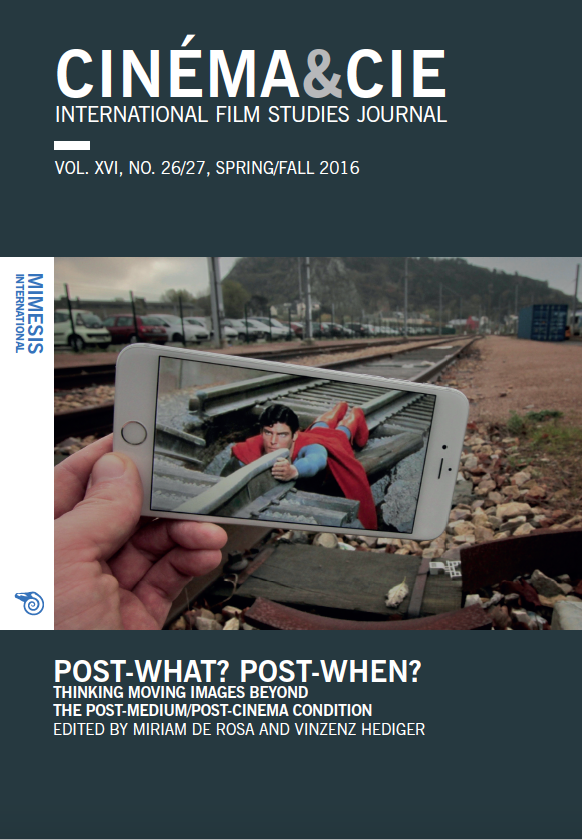Notes for a History of Radio-Film: Cinematic Imagination and Intermedia Forms in Early Italian Radio
Abstract
The article discusses the concept of ‘radio-film’, a term which repetitively entered the vocabulary of practitioners and theoreticians during the transition to sound, and raises several well acknowledged historical notions by adopting a slightly different question: has an idea of cinema as an entirely aural art — i.e. sound cinema as ‘cinema made of sound’ — ever come up in media history? Starting by considering the European scenario and by focusing more specifically on the case of the early Italian radio-play between 1925 and 1935, this article explores this path as a concrete historical possibility: in this context, the surfacing of two hybrid terms such as fonoquadro [phonoscene/phonoframe] and suonomontaggio [sound-montage] will represent the case studies for a discussion on ‘intermediality’ both as an epistemological framework to apply and ‘a state of historical transition’ to investigate. By questioning the role of cinema as an always present term of comparison in the debate on the medium specificity of radio and the ways in which a cinematic imagination has affected the development of entertainment genres in radio production, the essay aims at demonstrating how a hypothesis of aural cinema as a radio art can be grounded in several concrete aesthetic and technological intermedial exchanges.






